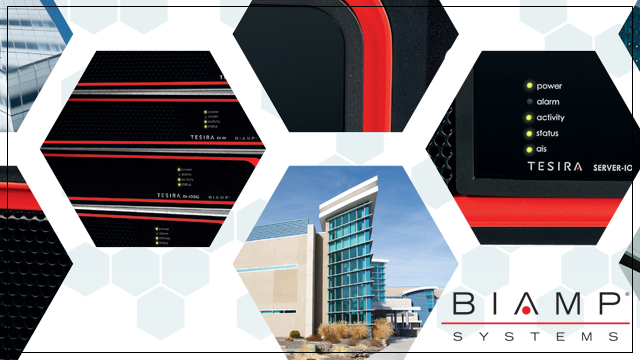Late last month, Jay Paul from Biamp Systems visited the Technology Engagement Center on Duke’s campus to showcase some of their upcoming hardware offerings and to provide the DDMC (Duke Digital Media Community) with an opportunity to ask general AV- (and not-so-AV) related questions.
The core of the conversation focused on Biamp’s new Tesira TCM-1 AVB ceiling microphone with built-in DSP for “beamtracking.” Wait… this is actually an interesting technology… let me explain.
Where we are today: Many mid-sized conference rooms have roughly three ceiling-mounting microphone pods. Each pod contains three mic elements. So, this conference room has nine individual mic cables (3 pods x 3 mics per pod = 9 mics) going back to the digital signal processor (DSP). This gives the room good coverage and the ability to “clean up” the captured audio by removing undesirable audio (HVAC unit, ballast noise, road noise, etc.) by filtering frequencies, providing gating, dynamically adjusting levels, etc. Also, with under a dozen mics, it gives the ability to provide rudimentary “conversation tracking.”
Where we will are going: So, the above nine-mic system has been working relatively well, but what’s the next evolution in improving speech intelligibility? In essence, adding more microphones… lots and lots of microphones! The Tesira TCM-1 AVB ceiling microphone has eight mic elements per pod, so our example above would go from nine microphones to 24 microphones. I know what you’re thinking… “That’s it? More mics? What’s the big deal?” As with most things audio related… it’s not that easy.
For starters, it’s not simply “more mics.” The magic of this system is in the way the additional mics are arranged in three-dimensional space within the pod to be directionally steerable to your desired sound source utilizing acoustic algorithms. This advanced beamforming simply isn’t possible with fewer mics. Second, with 24 mics in a traditional system, we’d need to run audio cables back for 24 individual mics to the DSP. The cable management, let alone the configuration of such a system, would be an AV nightmare. The Tesira TCM-1 AVB alleviates this problem by managing the communication between the mics and the DSP over a single Ethernet cable, and the pods can be daisy-chained to two additional units.
The audio samples provided by Biamp were impressive, and we look forward to seeing a working demonstration in the coming weeks. While it’s not the time to throw away your old mic pods just yet, this technology is the future of high-quality audio capture and transmission in flexible educational spaces.


